I am a big believer in setting yourself up for success by organizing your kitchen space and stocking it with the equipment and tools to make your job easy and enjoyable.
Sometimes though, making decisions about what to buy can be excruciating and difficult. Sometimes you buy the wrong thing, it doesn't work well, it breaks, and you regret it.
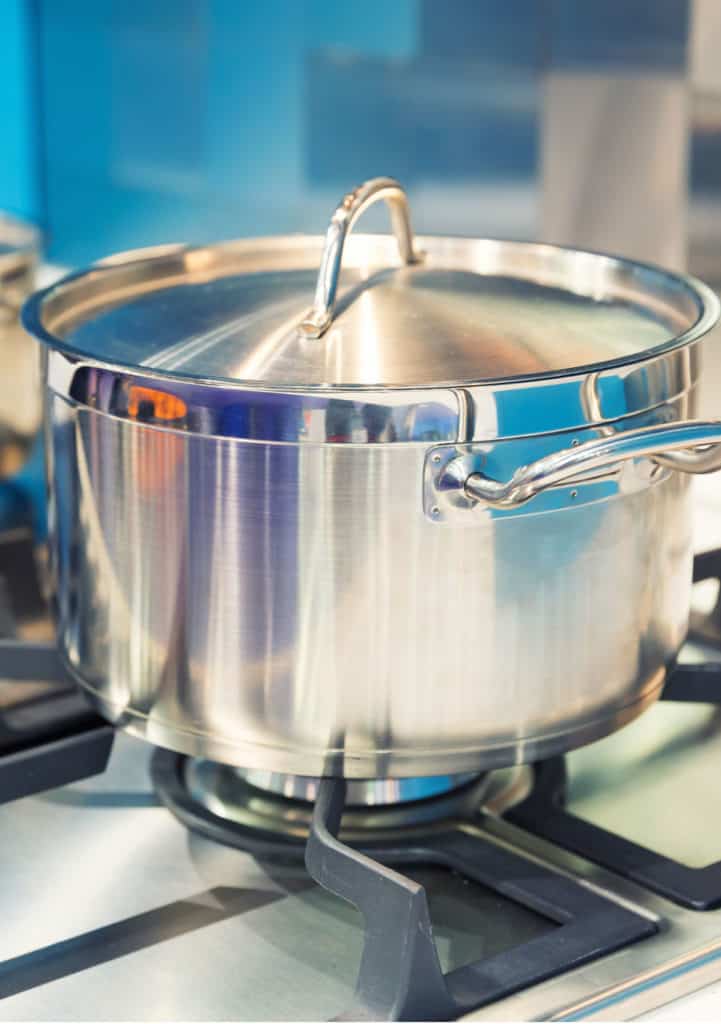
I have been cooking mindfully for about 25 years, and from the beginning I have paid attention to both the quality, and the energy, of my kitchen tools.
I am happy to share with you what I have learned. Because I value cooking, and the primary role it plays in health and wellness, I tend to invest in good quality tools.
The advantage of quality is that you can enjoy it daily, and the items last, which I believe saves money in the long run.
Ideally, you want to invest in the best quality you can afford. Saving up for some of these items will be worth it.
In addition to ease of use, functionality, and quality, I also pay attention to the energy of the items I choose. Items that are solid, nontoxic, and function well, impart clean energy and support nourishment.
Think of what happens to the energy of the food when you cook a soup in a solid and stable pot with a heavy, sealing lid, versus a thin-walled and warped pot that wobbles as it cooks, with a lid loosely balanced on top.
If the pot is thin and warped, it isn’t absorbing the heat source evenly, so your food will be cooked unevenly. All that shaking and instability also goes into the energy of the food.
So let me share with you now my top 14 kitchen tools, starting with my #1 favorite ...
1. Cast iron enameled cookware
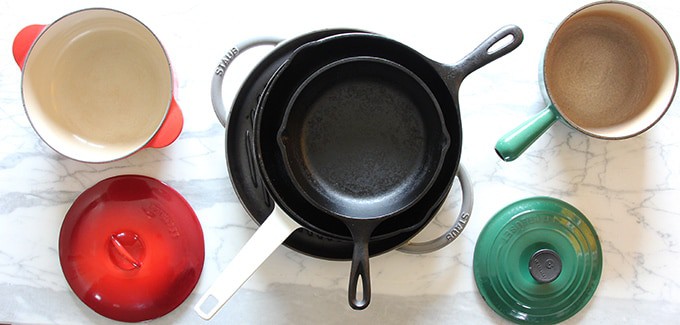
The best investments I have ever made are in high quality enamel cast iron cookware. I had my first Le Creuset pot for 20 years, and used it literally every single day without warping or loosing its nonstick properties.
I finally returned it to test the company’s lifetime guarantee because it had some tiny pockmarks on the bottom, and I got a replacement. I got their 2 ¼-quart signature saucepan.
I actually keep this saucepan out on my stove all the time, because I use it daily. It’s pretty much the only pot I use to cook rice and other grains.
An amazing thing is that if the rice cooks too long in this pot, it doesn’t burn. It just gets deeper and deeper brown at the bottom. Eventually, after a long time it blackens, but even that releases easily after soaking in water.
The fact that things don't really burn in these pots is itself reason enough to get one. I have been forgiven so many times by these pots, saving messy cleanups and heartache along the way.
So these enameled cast iron pots are basically nonstick, but even nonstick plus, plus.
The 2 main companies for the highest quality enameled cast iron are Le Creuset and Staub. The main difference between the two is how they look and behave inside.
Staub is black inside with an indestructible surface. Le Creuset is light colored, and it will scratch if you use metal. It will also discolor over time.
I enjoy using both brands, but I like Le Creuset a little more due to it's signature design and the lighter interior, because I like admiring the beauty and colors of the spices and vegetables while they cook.
Lodge, Martha Stewart, and other brands make enameled cast iron for less cost, but these have a tendency to chip, they may be lighter weight, and I am not convinced that they are as forgiving.
If you've never had a pot like this, however, these can serve as a good entry point.
Make sure when you are shopping to look for sales, and look for deals. Le Creuset and Staub offer many sizes and color, and there are always great deals to be found on discontinued or overstocked items. I have always bought mine on sale.
Check my review post on Le Creuset versus Staub for more details
Buy Le Creuset 2.25-qt Signature Saucepan
Buy Staub 3.75-qt Essential French Oven
2. Regular cast iron
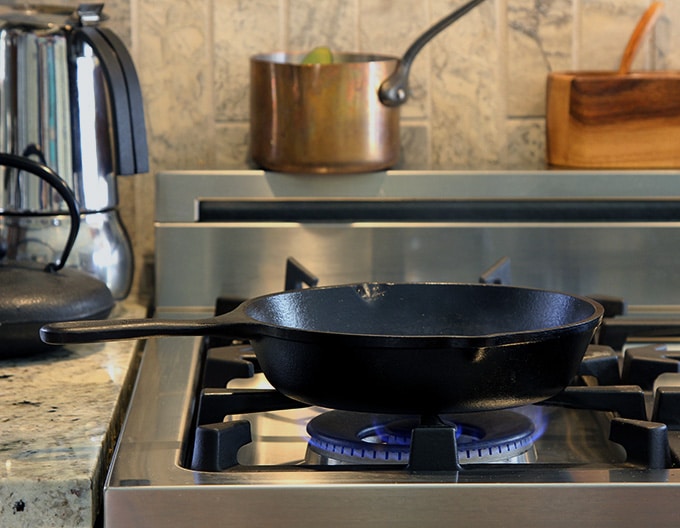
What about regular cast iron? Regular cast iron is non enameled. Regular cast iron is much cheaper than enameled, and it can be nonstick if you take excellent care of it.
The biggest downside with regular cast iron is the maintenance. You need to season your pots and pans and keep them seasoned after every use to keep them on the nonstick side.
I don’t find that I use mine very often because I prefer nonstick. I do appreciate that cast iron can double as an oven roaster. So you can make a pie or a pizza right in the cast iron and pop it into the oven.
Regular cast iron is not an essential in my books, unless you are looking to save money and you are willing to do the maintenance.
See more info on how to maintain cast iron
3. Quality stainless steel saucepans
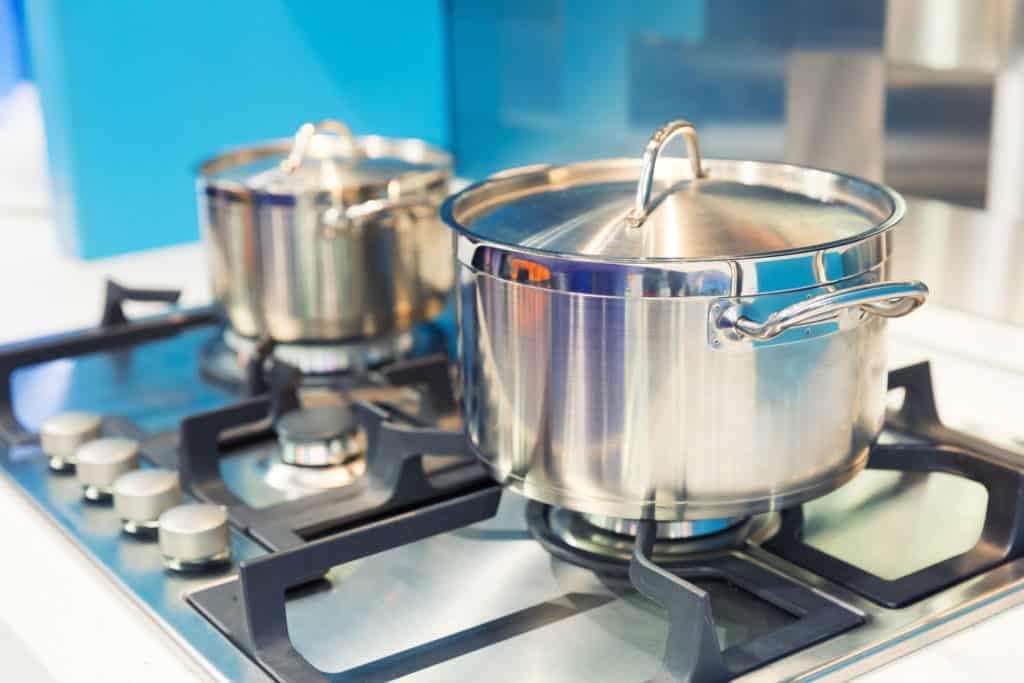
Saucepans are also known as pots, and every kitchen needs at least three of these in different sizes: 2 quart, 3 quart, and 5 quart.
Actually, I also highly recommend this mini pot, which is a butter warmer. It has a thick bottom, and it is perfect for heating up 1-2 portions of soup, stew, tea, coffee, etc. This pot gets almost daily use in my kitchen.
I recommend stainless steel for your saucepans, because it is the most non-reactive cookware.
Stainless steel works well for water-based cooking, and long-term simmering of soups and stews. You don’t have to worry about leaching of chemicals into your food, and you don’t have to worry about sticking either since you are always using water.
For example, when you sauté onions in stainless steel, at some point the onions will start browning and sticking. This is not a problem because you are using water. Add a bit of water and the brown bits come off the pot easily.
When choosing stainless steel pots I am not very picky, just as long as they have a bit of heft to them. It is also helpful to choose pots with lids.
I have noticed that nonstick pots are popular. I recommend that you avoid these.
Nonstick coatings get scratched and can leach toxins into the food.
These also tend to be lightweight, and so they are less stable for the food.
Light weight pots cause food to burn faster, giving you less flexibility. You will also be replacing them more often, so are they really cheaper in the long run?
4. Nonstick skillets
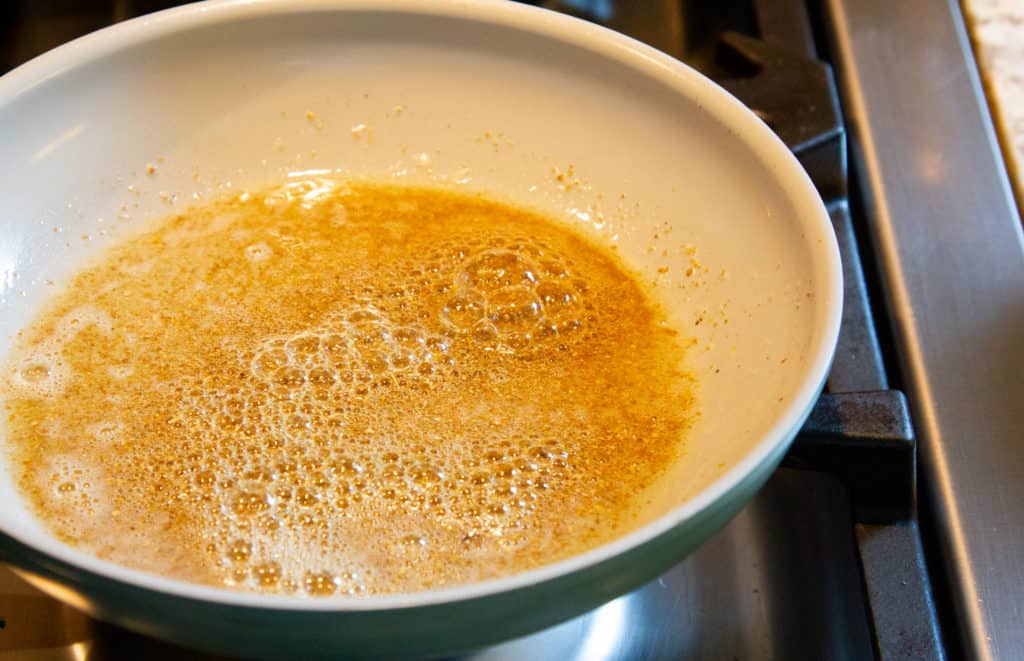
What about nonstick? I do believe that we need nonstick skillets. A skillet is otherwise known as a frying pan.
There are many things that are very difficult to cook without a nonstick skillet, such as vegetable burgers and patties, or just sautéed vegetables.
Particularly for vegetarian cooking, the browning or caramelization of vegetables is key for flavor creation. Nonstick is the best way to get that flavorful crust on your food.
So what kind of nonstick should you get?
I like nonstick from either Calphalon or GreenPan. Calphalon is anodized aluminum and Green Pan is a ceramic coating.
Anodized aluminum is truly non-stick, and the coating is very hard and durable, and difficult to scratch (unlike Teflon). It is also lightweight.
It is unlike the old non-stick surfaces, which feel cheap and risky.
This surface is not at all easy to scratch, so it feels much safer to use.
Many of the non-stick skillets on the market today, including those made by Rachel Ray, T-fal, All-Clad, Farberware, and Cusinart, are constructed with anodized aluminum.
The brands differ only by what their anodized aluminum surfaces are coated with.
Thankfully, it appears that the worst of the offending chemicals have been removed from all major brands.
What is anodized aluminum?
Anodized aluminum is treated with an electro-chemical process to harden the metal.
According to Wikipedia, anodizing changes the microscopic texture of the surface, and the crystal structure of the metal.
According to Calphalon, the manufacturer of an anodized aluminum skillet that I have been loving for some time now, their surface is 30 percent harder than stainless steel.
Calphalon describes the process of anodization as controlled, accelerated oxidation.
It makes me think of that ultra smooth, diamond-like surface you get on well-seasoned cast iron cookware. It is also produced by oxidation.
To sum up, you have a pretty ideal combination of affordable price, heat conduction, weight (light), strength (very), and durability.
Buy Calphalon Signature Hard Anodized Nonstick Skillet
Reduce your risk and enjoy the benefits of nonstick cookware
Since so many people have nonstick cookware, let’s cover safety quickly.
After a survey of the literature on non-stick cookware safety, the majority of concerns about non-stick cookware are related to the potential carcinogenic danger of ingesting chemicals contained in non-stick coatings.
This is easy to avoid. Avoid using metal utensils, and if you see any of the coating on a non-stick surface flaking off, discard the item right away.
For me, the benefits of a nonstick surface are worth withstanding the minor risks for occasional use.
I would also avoid using nonstick cookware in the oven, or under a broiler.
What about GreenPan?
GreenPan was the first company to produce a ceramic nonstick coating based on silica (sand) rather than plastic.
The company claims its coating is free of PFAS, PFOA, lead, and cadmium, so it will never release toxic fumes, even if it’s accidentally overheated. It is safe up to 450 degrees Fahrenheit.
Arguably, one would not accidentally eat those chemicals either if the coating were to get chipped.
The underlying metal on a GreenPan differs by style, and it's confusing. It could be aluminum, hard anodized aluminum, or stainless steel.
The conductivity (evenness of cooking) and the weight of the metal will change based on the different metals, but each one is still coated with the same ceramic.
The cost of the pan increases based on the quality of the underlying metal. As long as you heed the rule about throwing out scratched pans, it shouldn’t matter too much if you try an inexpensive one with an aluminum base.
One last point is that after about a year of use, I have noticed my GreenPan getting less nonstick than before. I have seen this complaint raised by others.
When it is new, it is super slick. I guess nothing lasts forever, but this might be an argument for the more inexpensive GreenPan, and replacing it more frequently.
5. Instant Pot
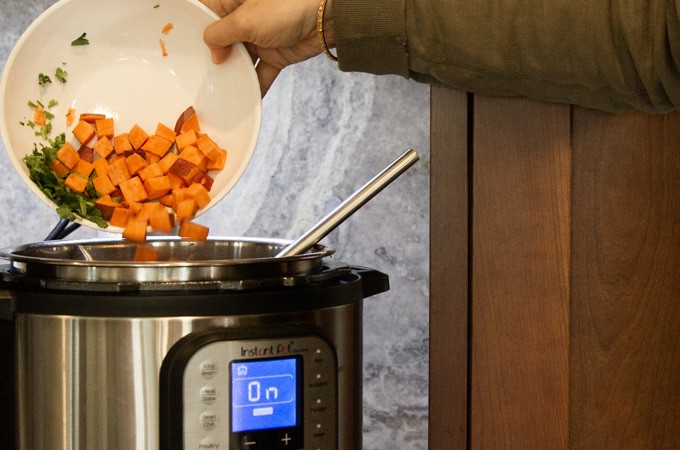
From pots and pans, we’ll move along to power tools. Despite being a mindful chef and a nature lover, I do love my kitchen tools.
The reason is that it really makes life easier, and in many cases it allows me to do things I couldn’t do otherwise, or that would be very onerous otherwise.
The first one we’ll address is the Instant Pot.
You’ve likely heard about it, or know someone who has one. You may be wondering if it is worth investing in one.
Why would you want an Instant Pot? There are 5 main reasons.
1. Cook beans and lentils from scratch
Dried beans and lentils are cost-effective, they store well, and they are highly nutritious and satisfying. They are full of fiber, high in protein, and low in fat. There are endless ways to cook them so they taste amazing.
And, it is very difficult to cook beans from scratch without an Instant Pot because it takes forever. Using the Instant Pot makes it a breeze to cook this highly nutritious food daily if you want without thinking twice about it.
2. Digestibility
Because the Instant Pot heats food beyond the boiling point, it can tenderize meat and break down the tough cell walls in vegetables and beans faster.
This means the cooked food will be softer and more digestible than it could ever get in a regular saucepan in far less time.
When your food is soft and well cooked it will be more digestible and easy on the tummy.
Another advantage is the one pot advantage. When you cook multiple ingredients together under pressure, you will get a harmonious result.
3. Speed and convenience
The Instant Pot allows you to cook food faster, and it happens on its own. The Instant Pot is "set and forget." Once you put your ingredients in and lock the lid for pressure cooking or slow cooking, you can walk away.
It will finish the cooking, and then default to a keep warm setting. You can come back hours later to enjoy your food.
4. Multiple functions
With the 7 in 1, you can sauté, pressure cook, slow cook, rice cook, make yogurt, steam, and warm.
With the 10 in 1 you can even sous vide, sterilize, and bake cake.
There’s a 9 in 1 also. It’s crazy how many models there are. Some are even novelty, such as Disney, Star Wars, or different colors. I suggest you focus on checking the functions to see which ones you need and will use.
And there is an 11 in 1 with a special air fryer lid for air frying. Air frying is basically the same as baking in a convection oven. This is a pretty unique feature, and I am seriously thinking of upgrading my Instant Pot to get this feature.
You use it just like your main oven, where you set an oven temperature and a time, and your food bakes and crisps up due to a fan that circulates hot air into the cooking chamber.
>> See this great demo of how to use the 11 in 1, including how to make air fryer chicken wings.
5. Easy to clean up
The Instant Pot is really easy to maintain. There is just the one stainless steel pot. The lid doesn’t exactly get dirty. At least it hasn’t for me.
Different sizes
The Instant Pot comes in three sizes: 8-quart, 6-quart, and 3-quart mini.
For most people the 6-quart will be your best choice. It is what I have.
A cup of lentils is easy to cook in this pot, and that will make 3-4 servings. You could easily cook up to 3 cups of dried lentils in this pot and make enough for 10-12 people.
Instant Pot downsides
The main downside of the Instant Pot is that it is an extra tool that takes up space on your countertop. You probably want to have space for it, otherwise you might not use it much.
However, with its incredible multifunction uses, and ease of cleanup, once you get over the small learning curve, it is very likely that you will use it.
The incredible reviews online attest to its incredible popularity.
6. Food processor
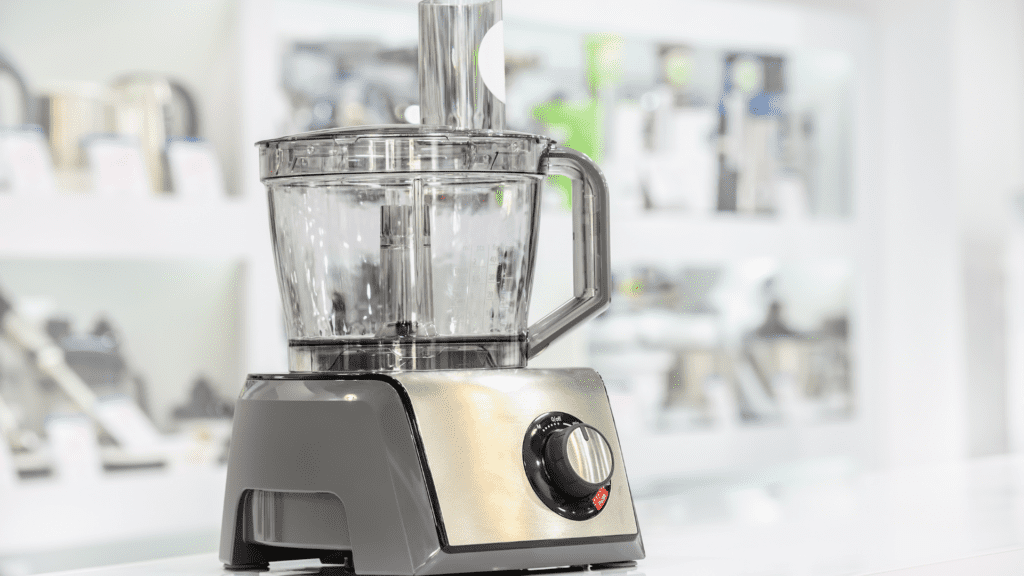
The food processor was one of the first time-saving kitchen gadgets that appeared on the market. I’ve had mine for about 20 years.
My favorite use for the food processor is to make pastry crust in 5 minutes or less.
I also love it when I want to grate or slice large quantities of vegetables. The grater attachment makes quick work of it.
It is also essential when you need to chop, rather than puree a bunch of ingredients, such as when making a vegetable patty, or chopping nuts, herbs, parmesan cheese, etc.
If you only need to chop a small number of ingredients you can get away with a mini chopper/grinder. This is the next item on the list.
Let me tell you about it.
Buy 7-cup food processor on Amazon
7. Mini chopper/grinder
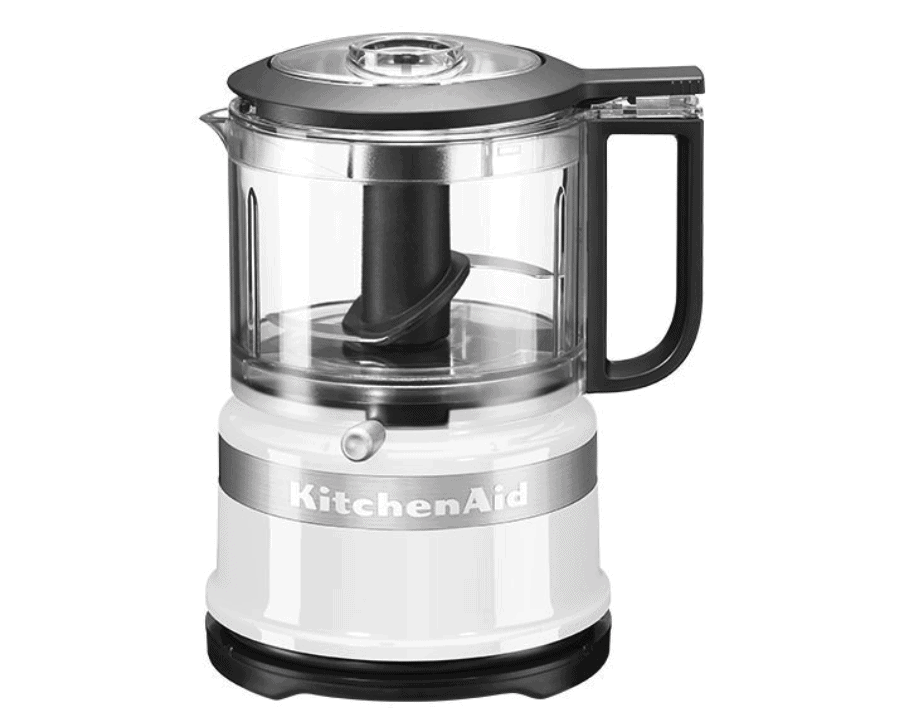
I use this tool more often than the larger food processor because I use it to make ginger pickle, salad dressings, pestos, and hummus.
I have the 3.5 cup size.
You can fit one can of chickpeas in this mini chopper/grinder and make hummus in it.
It works great. It also has a spout on the top to slowly add oil into the dressing to emulsify it.
8. Immersion hand blender
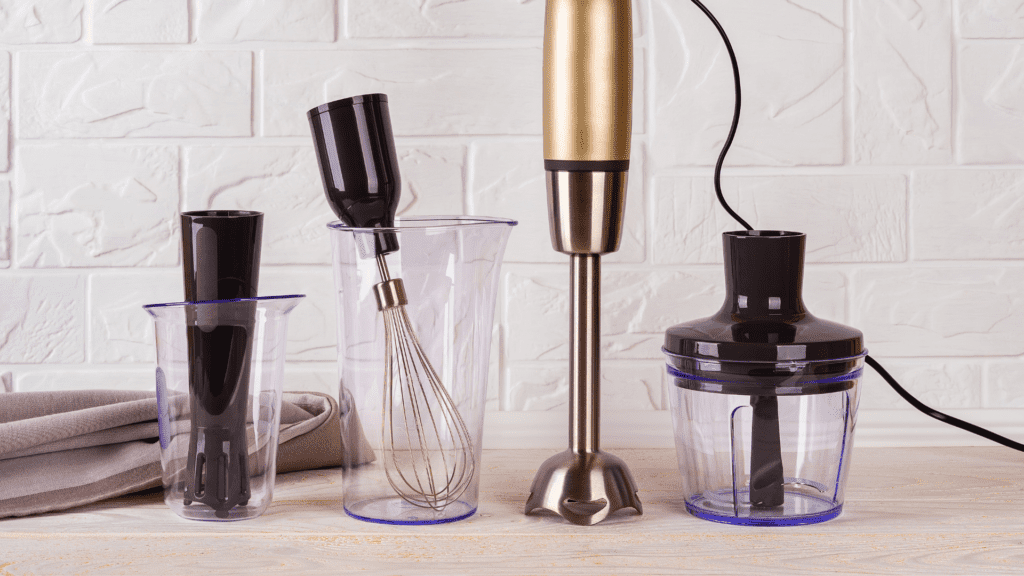
The immersion hand blender is the tool I probably use the most.
You can buy this hand blender with a blending bowl. I used to use mine for ginger pickle, salad dressings, pestos, and hummus.
It's not very powerful though, and eventually it cracked. So it's only helpful for light tasks. Eventually, you'll want to upgrade to the true mini chopper/grinder or a food processor.
Investing in this tool is a good starting place if you don’t have any of these tools, and you want to get started.
The mini/chopper grinder would be next to give yourself some extra power, and the larger food processor gives the grating, slicing, and large mixing abilities.
My most frequent use for the immersion blender is to use the hand blender right in a hot soup pot to puree it, or to make stewed greens. You can even mash up sweet potatoes and turnips, which we did just the other day.
The advantage is when blending anything hot. It is difficult (and dangerous) to puree hot things in a blender, plus there is the work of transferring it. So this is super handy.
I love the whisk attachment when making whipped cream, and the new version of my Braun hand blender has a masher attachment.
9. High speed blender
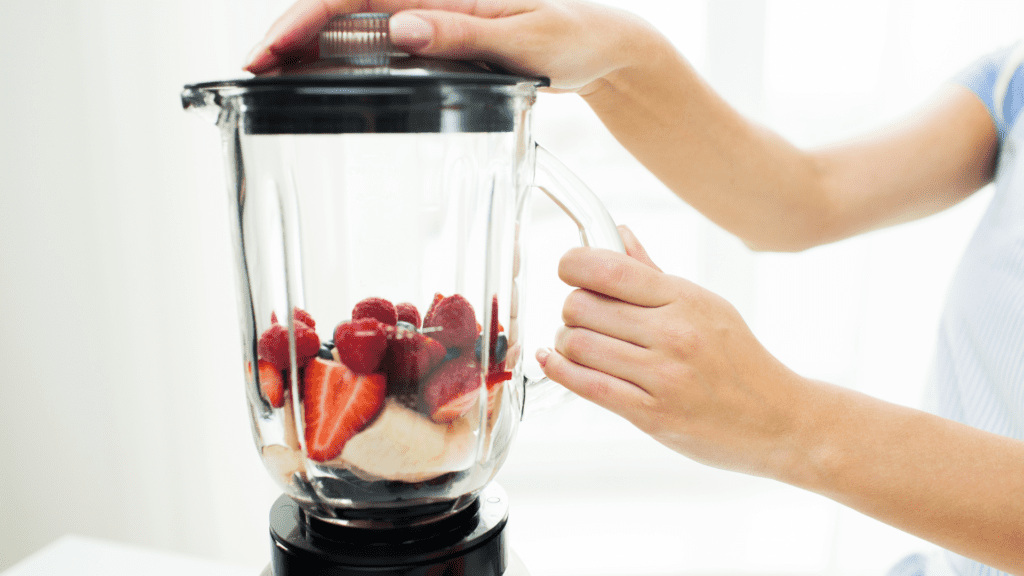
I got away without having a high speed blender for a very long time.
The biggest thing I use it for today are for making smoothies, nut milks, and for grinding liquids into a smooth paste.
The blender only works with watery or liquid things.
You may be familiar with the Vitamix. It can “cook” soups and heat things with it’s high power. That is more for raw foods cooking.
For the type of cooking I do, the high speed blender would allow for the blending of soaked grains or lentils with water to make different batters. This is specialized, and likely not something most of you will be doing.
I actually have a separate gadget to do this specialized work which is not on this list.
10. Electric kettle
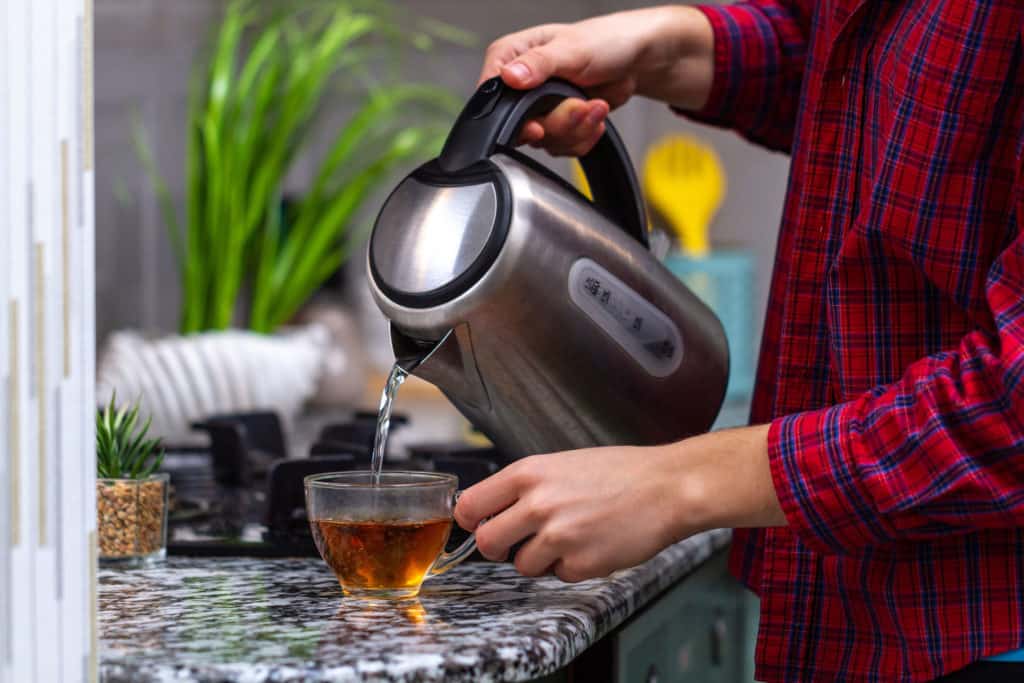
The electric kettle should be #1 on my list. I use it multiple times a day to make hot water and teas.
I like the electric kettle that shuts off automatically because it is so easy to use.
We invested in a better quality stainless steel one because we knew it would sit out on our counter all the time and we wanted it to look good.
Stainless steel is also a safe metal. When you are heating water to drink you want to make sure it is in a nontoxic environment.
I am actually in the market for a new electric kettle, and so I spent quite some time searching Amazon.
I finally went back to the brand I have enjoyed for 10 years now: KRUPS. The only thing that’s failing is physical. The handle is starting to come off. I can’t complain, considering how much use it has gotten.
KRUPS has a new model that heats to specific temperatures and will keep warm for 30 minutes. I like these features.
KRUPS specific temperatures kettle
A competing product by Cuisinart has the same features, and they stay on by default, so the user experience is a little better, but the cost is higher. I would consider this one also.
For a simple kettle and ease of use, I recommend this one from KRUPS. It has the same latch to turn it on that I have currently, and when it boils, it shuts off. Simple.
There is a similar option with a brushed stainless steel look. Also KRUPS.
KRUPS brushed stainless steel kettle
11. Cutting board
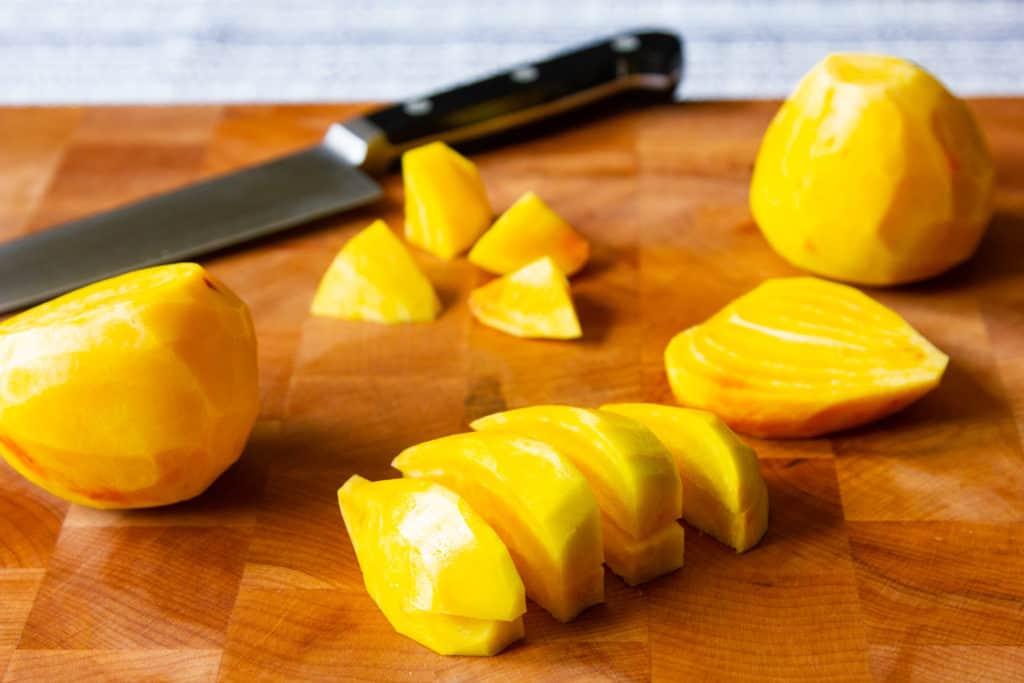
You have likely seen my large wooden cutting board. It is 18x24 inches, and it stays out on my counter at all times.
I don’t think that you need to invest is something this large, although I do love the large size to work on.
I will recommend that you get the largest board you can fit in your space.
I am going to share the link for John Boos wooden cutting boards. They come in different shapes, woods, thicknesses, and so on.
This will give you a professional look and inspire you. You will need to maintain it by oiling it regularly, and I would keep off pungent items like onions, ginger, garlic, and chilis. Even radishes.
The reason is the smell. It is very difficult to remove the smell once it seeps into a wooden board.
I use a separate small board for onions, ginger, garlic, and chilis, and the board I use for this is from Epicurean.
Epicurean boards are made from sustainable paper that is pressed together under extreme pressure and heat.
The material is strong, lightweight, nonporous, knife-friendly, and dishwasher safe.
I can attest to its durability. I have a board that was left by the previous owners of our house.
I have no idea how long they've had it, but I have been using it for over 7 years. I run it through the dishwasher occasionally. There has been no warping or anything. You can oil it to bring it back the color.
Epicurean cutting boards come in all shapes, colors, and sizes. I encourage you to buy the largest size that is still in an affordable range. The middle size and price appears to be 17.5x13 inches.
I will provide that link so you can see it.
12. Japanese vegetable knife
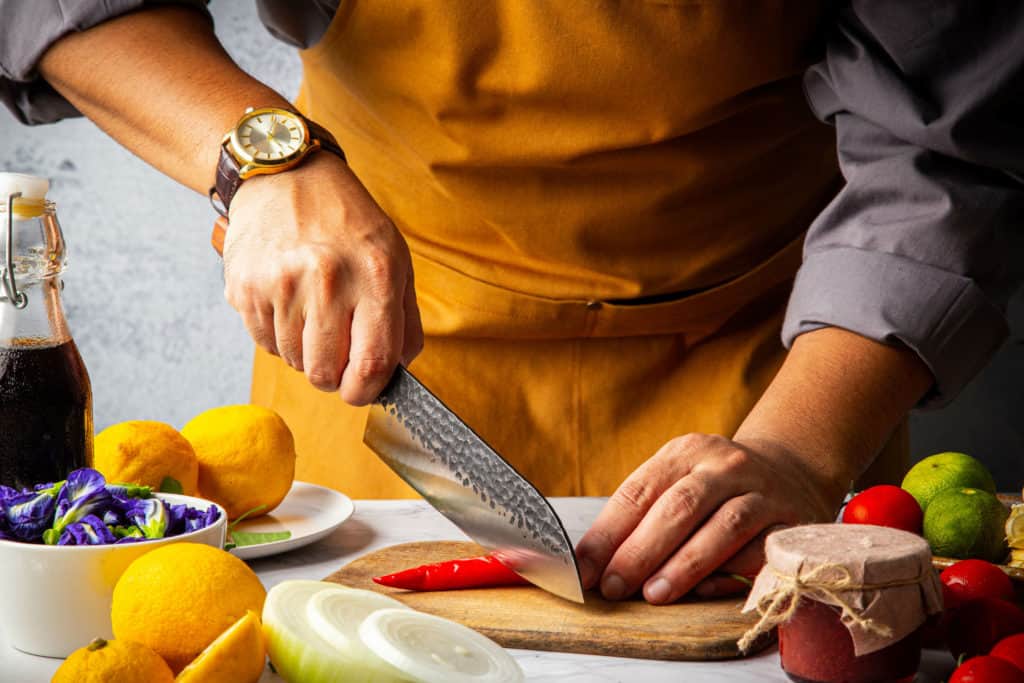
The next, and one of my most favorite tools in the kitchen that gets daily use, is my Japanese style knife.
I have a Henkkels, which is made in Germany. I love it because it is balanced, very lightweight, short (6-7 inches) and the blade is very thin.
The thinness of the blade makes it great for chopping and slicing vegetables. It is also helpful for fruits and meat.
The design is a little square, which has a friendly feel that I like. My knife is very old. The modern knives have grooves in the blade to prevent the vegetables from sticking to the knife.
These knives can get very costly, but you can get a pretty good starter knife for as little as $40.
A good knife will last you a lifetime, so don’t hesitate to invest in this when you are ready.
Other knifes I use in my kitchen include a longer and heavier chef’s knife, as well as a paring knife, utility knife, and a bread knife.
My Japanese knife recommendations
Santoku: https://amzn.to/3iNL1bO
Mercer: https://amzn.to/3vhVaSR
Henkkels: https://amzn.to/3BpM8Wi
Global: https://amzn.to/3lt3BaJ
13. Good quality citrus juicer
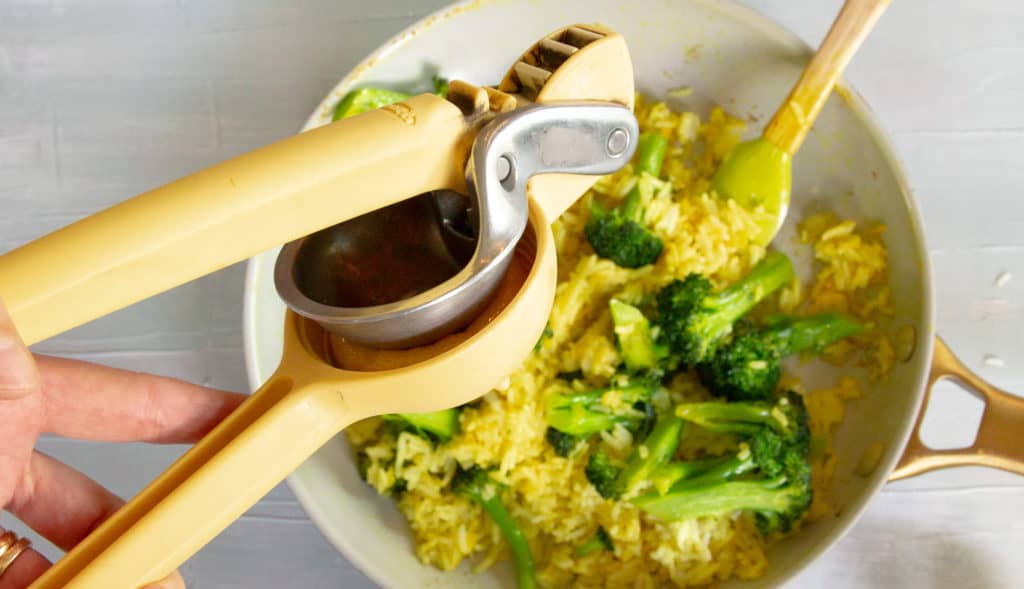
A good quality citrus juicer is an essential kitchen tool. Lemons and limes are the best source of the sour taste.
Using citrus in your food heightens the flavor and increases your digestive juices.
14. Bench scrape
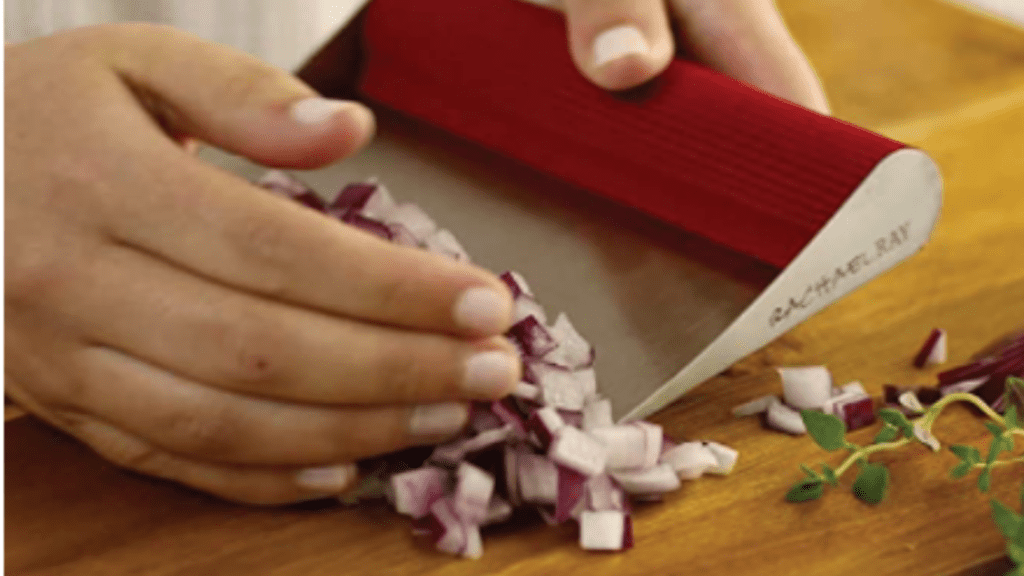
A bench scrape is a tool that is probably less common in most kitchens, but once I got one I don’t know how I lived without it.
It is so handy to be able to transfer food from the cutting board to the cooking pot.
If you think it could be helpful to you, then don’t hesitate.
BONUS: Coffee grinder (reserved for spices)
This is a nice-to-have tool that enables you to grind whole spices into powdered spices.
A coffee grinder that you reserve only for spices is the best way to ensure that your spices are as fresh as possible.
You can buy whole seeds of coriander, cumin, black peppercorns, cloves, etc.
You don’t want to use the coffee grinder for grinding coffee, or vice versa, because the strong flavors will transfer.
Depending on how much you want to invest in this, and how much you value this feature, you can reserve the least expensive coffee grinder for limited spice grinding.
Less costly grinders have plastic bowls that are not removable.
I have the Cusinart Grind Central, which does have a removable stainless steel bowl, and it has served me well for 10 years.
Or you could go for this option by SHARDOR. I haven’t tried this, but it looks really slick because it comes with two stainless steel bowls.
One is equipped with 2 blades for dry ingredients, such as flaxseeds, nuts, spices.
The second bowl is equipped with 4 blades for garlic, ginger, basil, coconut, and chutneys. I do love this chutney feature.
I have an Indian mixie, which gives me this same feature.
For $40 dollars, this SHARDOR unit would give you a lot of versatility.

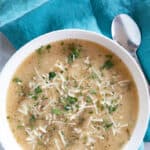
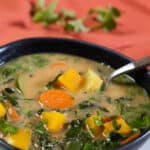
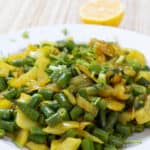
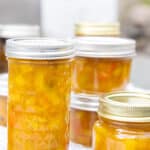
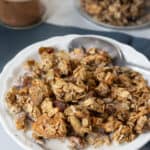
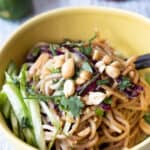
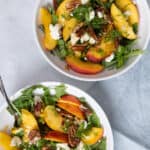
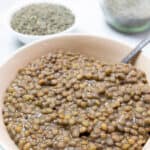
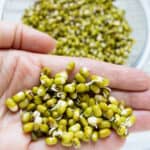
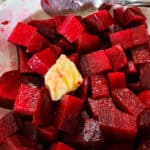


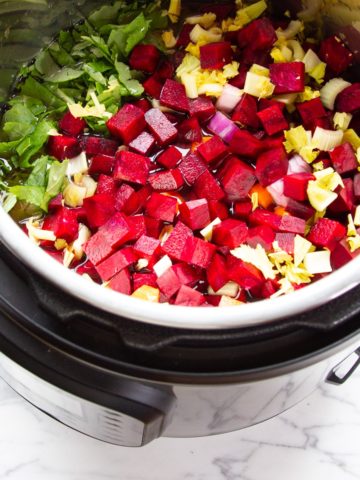
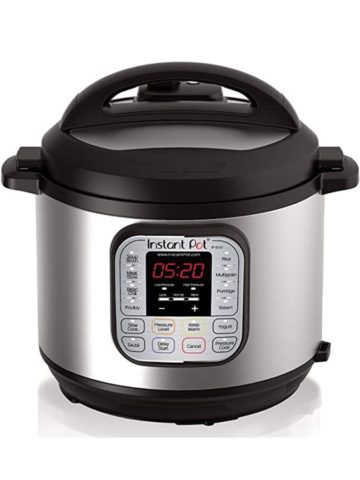

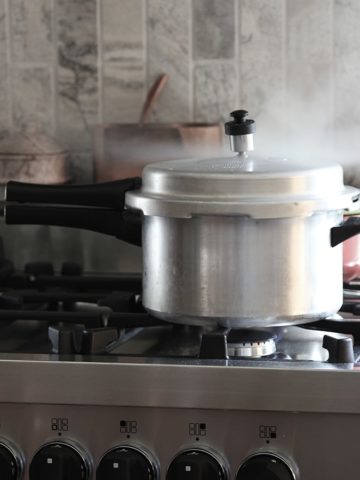
Kathy O
I have all the tools. This gives me a great idea of what I might get rid of. Highly recommend the Instant Pot. Last year we remodeled the kitchen and I used the Instant Pot for a majority of our meals. I love the idea of upgrading it to an Air Fryer. Sadly you can purchase the entire unit rather than just the lid for only $20 more. ??? Do I need two? Maybe I can find a home for the old unit. Good to dream. I will wait for a black Friday sale. But if you don't already have one - I agree it is a must have kitchen tool.
If you are looking for non-stick skillets. Andrea's suggestions are great. I have used both. But 3 years ago I was staying at a friends used her Hex Clad pans, fell in love and bought a set before heading home. They have been great. Clean easily and allow the use of metal tools without hurting the surface..
Finally - I thought I could live without an immersion blender since I have a food processor and high power blender, ran into a great sale on the immersion blender with the beater and mini food processor attachments. Not sure how I ever lived without them.
Happy Shopping and Happy eating.
Kathy O
I have all the tools. This gives me a great idea of what I might get rid of. Highly recommend the Instant Pot. Last year we remodeled the kitchen and I use the Instant Pot for a majority of our meals. I love the idea of upgrading it to an Air Fryer. Sadly you can purchase the entire unit rather than just the lid for only $20 more. ??? Do I need two? Maybe I can find a home for the old unit. Good to dream. I will wait for a black Friday sale. But if you don't already have one - I agree it is a must have kitchen tool.
If you are looking for non-stick skillets. Andrea's suggestions are great. I have used both. But 3 years ago I was staying at a friends used her Hex Clad pans, fell in love and bought a set before heading home. They have been great. Clean easy and allow the use of metal tools without hurting the surface.
Finally - I thought I could live without an immersion blender since I have a food processor and high power blender, ran into a great sale on the immersion blender with the beater and mini food processor attachments. Not sure how I ever lived without them.
Happy Shopping and Happy eating.